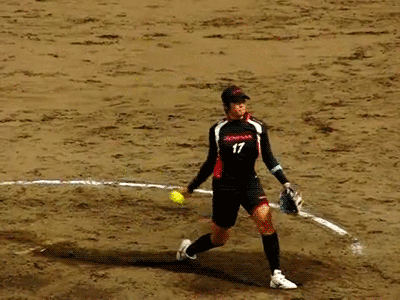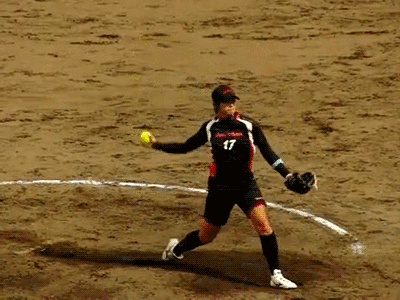Reader question: hand position at release in forearm fire
Here’s a question from reader Eddie:
I have been coaching girl’s fastpitch softball for many years and I am one of those coaches from the old school of getting their pitchers to have a quick arm circle, lead with the thumb at release and just basically snap the wrist and follow through. Their follow through would end, coming up, rather than out toward the catcher.
I have just started watching some of your videos with Phil, but he never really talks about what the wrist and hand are doing at release. Does the wrist automatically turn just before release, which would have the thumb leading, or is the back of the hand not behind the ball at release? I’m just wondering if this is maybe too advanced for 9 and 10 year old girls.
I have been coaching girl’s softball for over 20 years, and I coach 10U and middle school girls as well. I just thought this would be more in line for the middle school girls rather than 10U. Your thoughts?
There are really two questions here: what exactly is the hand doing at release, and is it too advanced for very young pitchers?
1: What are the hand and wrist doing at release?
Short answer: the hand and wrist are relaxing 100% and letting the force of the arm whip dictate their natural movements.
Long answer: I don’t really like to emphasize this with kids (for reasons I’ll explain in question 2), but it doesn’t hurt to understand the breakdown.
In this article I illustrated the breakdown of hand and wrist position leading up to the actual release, and it’s important that the arm follows this trajectory in order for forearm fire to work properly. From there, the release might vary slightly from pitcher to pitcher if the arm is truly relaxed, because everyone has a different arm and shoulder structure. But we’ll look at Yukiko Ueno, who is a very good example. NOTE: this is for the fastball only.
Here is our favorite video of Ueno warming up in slow motion:
If you isolate the wrist, it looks like this:

Look familiar? When we take just this piece, it’s really not too different from the old-school wrist snap; the palm is facing the catcher and the fingers come up toward the wrist as the ball rolls off them. THE BIG DIFFERENCE is she isn’t forcing this, as pitchers do in the old-school elbow to the catcher method; she is completely relaxed, and this is happening anyway, all by itself.
In the continuation, her wrist turns over, because that’s where her momentum naturally takes her:

It looks very deliberate in slow motion, but at full speed her arm would be as limp yet lethal as a snapped towel.
2: Is this too advanced for a 9-10 year old pitcher?
Is the explanation of hand position too advanced? Yes.
Even if they understand your words, they won’t be able to process such detailed information into actual body movement. They should focus on relaxation and speed, no matter what comes out of it at first.
Is forearm fire too advanced? No.
While I’ve seen exceptional 9 year olds get it, most won’t. But that doesn’t mean you shouldn’t teach it to them. They’ll struggle with it for a while, maybe years, but then they’ll get it (or they won’t…not everyone who starts pitching remains a pitcher, and that’s perfectly fine). Teaching something different to a 9 year old just because it’s easier isn’t good practice. Yes, she’ll be able to pitch in a game more effectively at a younger age, but if you’re trying to develop a real pitcher, you have to look at the bigger picture. 10U wins mean nothing if bad habits cause her to stall out at 15-16 when college coaches are looking.
Think of it this way: if your 9 year old wants to be a world famous pianist, you’ll give her piano lessons at 9, and you’ll listen to a lot of choppy scales before she can play Beethoven. You wouldn’t get discouraged by the scales and hand her a toy xylophone, telling her she can try the piano again when she’s 12. She’d just be starting from square one at 12 and be behind others developmentally.
Same goes for teaching one pitching method and then switching to forearm fire later. Start with forearm fire on day 1; just have a realistic attitude and know it might be a rough road. No one said pitching was easy!
Last night I had just got together with a student that I had worked with in the winter/spring off season. We have been running into a lot of rain here in Ohio which has been disruptive to their travel ball season so her Dad brought her to me to look at and tweak. Your article was exactly what I saw her doing. She was forcing the hand and wrist in her forearm fire. Love it! I will have her read your article and watch the attached videos. Thank you very much, Carly!